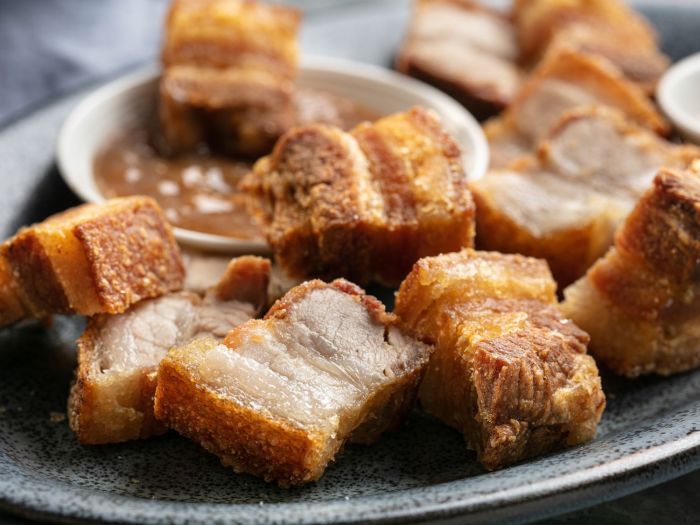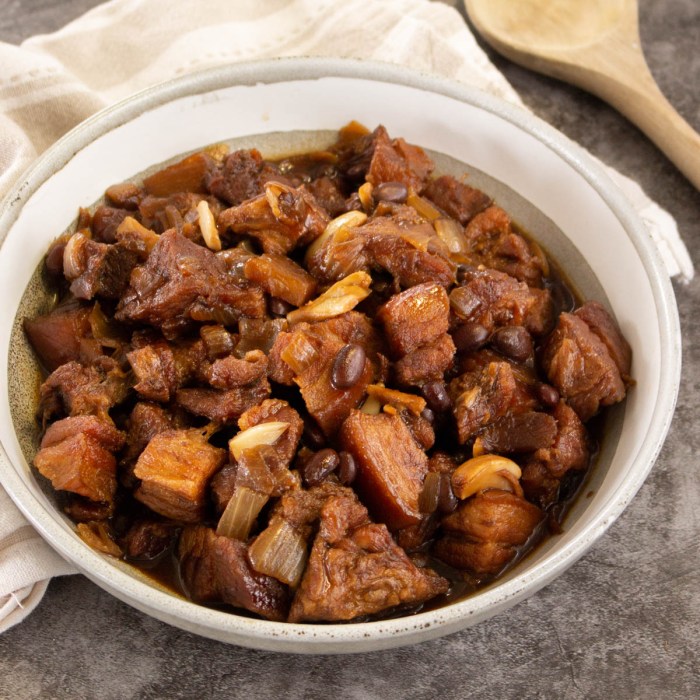As a professional writer, I will provide a comprehensive and high-quality article on how to cook pork Filipino style.
Tips for Cooking Pork Filipino Style
When cooking pork Filipino style, it is important to marinate the meat for several hours to enhance the flavors. Use ingredients such as soy sauce, vinegar, garlic, and pepper to create a delicious marinade. Additionally, make sure to cook the pork on low heat for a longer period of time to ensure that it is tender and juicy.
What is Meant by Cooking Pork Filipino Style?: How To Cook Pork Filipino Style
Cooking pork Filipino style refers to the traditional way of preparing pork dishes in Filipino cuisine. This involves using a combination of sweet, sour, and savory flavors to create mouthwatering dishes that are loved by many.
In Maluku elegant style, cooking iceberg lettuce Chinese style involves stir-frying the crisp leaves with garlic, ginger, and soy sauce for a flavorful dish. To learn more about how to cook iceberg lettuce Chinese style, visit how to cook iceberg lettuce Chinese style.
What is Known About Pork Filipino Style?
Pork Filipino style is known for its flavorful and tender meat that is often paired with rice and vegetables. Popular pork dishes in Filipino cuisine include adobo, sinigang, and lechon kawali. These dishes are enjoyed by both locals and tourists alike.
Solution for Cooking Pork Filipino Style
To cook pork Filipino style, follow traditional recipes and techniques that have been passed down through generations. Experiment with different seasonings and cooking methods to create your own unique twist on classic Filipino pork dishes.
Detailed Information on Cooking Pork Filipino Style

When cooking pork Filipino style, it is important to use fresh ingredients and high-quality pork cuts. Make sure to marinate the meat for at least a few hours to allow the flavors to penetrate. Cook the pork slowly on low heat to ensure that it is tender and juicy.
Describing in Depth How to Cook Pork Filipino Style
To cook pork Filipino style, start by marinating the meat in a mixture of soy sauce, vinegar, garlic, and pepper. Let the pork sit in the marinade for several hours or overnight for the best results. When ready to cook, sear the pork in a hot pan until it is browned on all sides. Add the marinade and simmer the pork on low heat until it is cooked through.
When it comes to cooking iceberg lettuce Chinese style, the key is to keep it simple yet flavorful. You can stir-fry the lettuce with garlic, ginger, and soy sauce for a delicious dish. For a healthier option, you can also steam the lettuce and serve it with oyster sauce. If you’re feeling adventurous, you can even try making a lettuce wrap with minced meat filling.
Check out this how to cook iceberg lettuce Chinese style guide for more recipe ideas!
Conclusion
In conclusion, cooking pork Filipino style is a delicious and flavorful way to enjoy pork dishes. By following traditional recipes and techniques, you can create mouthwatering dishes that are sure to impress your family and friends.
Frequently Asked Questions
1. What is the key to tender and juicy pork Filipino style?, How to cook pork filipino style
The key to tender and juicy pork Filipino style is to marinate the meat for several hours and cook it on low heat for a longer period of time.
2. Can I use different cuts of pork for Filipino style cooking?

Yes, you can use different cuts of pork for Filipino style cooking, but make sure to adjust the cooking time accordingly to ensure that the meat is tender.
3. Are there any alternatives to soy sauce in Filipino pork dishes?
Yes, you can use alternatives such as coconut aminos or tamari as a substitute for soy sauce in Filipino pork dishes.
4. How can I add a spicy kick to my pork Filipino style dishes?

You can add a spicy kick to your pork Filipino style dishes by incorporating chili peppers or hot sauce into the marinade or sauce.
5. What are some popular side dishes to serve with pork Filipino style?
Popular side dishes to serve with pork Filipino style include steamed rice, sautéed vegetables, and pickled papaya or atchara.
